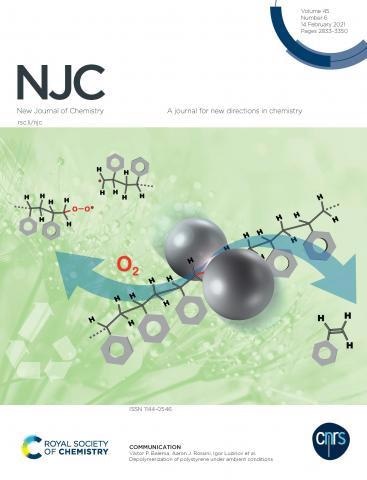Mar 18 2021
Researchers from the U.S. Department of Energy’s Ames Laboratory and their collaborators from Clemson University have invented a low energy, green process to break down polystyrene, a kind of plastic used extensively in cutlery, disposable food containers, foam packaging materials and several other applications.

Image Credit: Ames Laboratory, U.S. Department of Energy.
Polystyrene adds to the considerably larger worldwide issue of plastic waste. Annually, hundreds of millions of metric tons of polymers are produced, a large bulk of which is thrown away after use.
The stability and chemical durability of industrial polymers prevent plastic waste from degrading easily in landfills. Thus, it is usually burned, which generates carbon dioxide and other toxic gases.
To prevent the increasing flood of polymer waste and decrease carbon dioxide emissions, plastics must be recycled or transformed into new value-added products
At present, recycling of the great majority of plastics is not financially viable. It is time-consuming and laborious to separate and sort them, and chemical processing and remanufacturing of plastics necessitates a considerable amount of energy input and hazardous solvents.
In general, re-processed polymers exhibit inferior performance compared to the newly manufactured 'made from scratch' materials.
A research team from Ames Laboratory employed ball-milling process to deconstruct commercial polystyrene in a single step, at room temperature, in the ambient atmosphere in the absence of hazardous solvents.
Ball-milling is a method in which materials are placed in a milling vial with metal ball bearings, which is agitated until a preferred chemical reaction takes place. This experimental method is dubbed mechanochemistry and finds several applications in new materials synthesis, offering appealing features with respect to plastics recycling.
The polystyrene deconstruction continues via a range of chemical events where the macromolecules are mechanically cut apart, which produces free radicals that can be detected in the milled material even if it is exposed to air for a long time.
The metal bearings employed for milling and the ambient oxygen serve as co-catalysts that allow the monomeric styrene to be derived from the oligomeric radical-bearing species that are developed.
The experiments demonstrated that the increase in temperature in the material at the time of milling is not behind the noticed phenomenon as the temperature within the milled powder does not surpass 50°C while the thermal decomposition of polystyrene in the air begins at around 325°C.
Clemson’s team verified the extensive deconstruction of the original polymer into tiny fragments, oligomeric materials, appropriate for additional processing into new value-added products.
This method represents an important breakthrough that enables dismantling of a polymer simultaneously with its break-down under ambient conditions, that is, ~300 °C below the thermal decomposition temperature of the pristine material. We think this proof of concept is an exciting possibility for developing new recycling technologies for all kinds of plastics, and that will contribute to establishment of the circular economy.
Viktor Balema, Senior Scientist, Ames Laboratory
Igor Luzinov, Balema’s collaborator and Kentwool Distinguished Professor from Clemson University, further noted that “this discovery opens new avenues for low temperature recovery of monomers from multicomponent polymer based systems such as composites and laminates. Also, our technology will allow extracting the monomer from crosslinked materials containing styrene units in their structures.”
Electron paramagnetic resonance spectroscopy shows large concentrations of free radical carbon-centered species in polystyrene that was milled in air. This is a startling result because free radicals are normally very reactive.
Aaron Rossini, Professor and Alfred P. Sloan Foundation Research Fellow, Iowa State University
“Also, the presence of the radicals gives direct evidence that the milling directly causes scission of the polymer chains. We expect that the reactive sites associated with the free radicals can be used to functionalize the processed polymers to obtain new value-added products,” added Rossini.
The study was financially supported in part by the Ames Laboratory’s Laboratory Directed Research and Development (LDRD) Program.
Journal Reference:
Balema, V. P., et al. (2021) Depolymerization of polystyrene under ambient conditions. New Journal of Chemistry. doi.org/10.1039/D0NJ05984F.